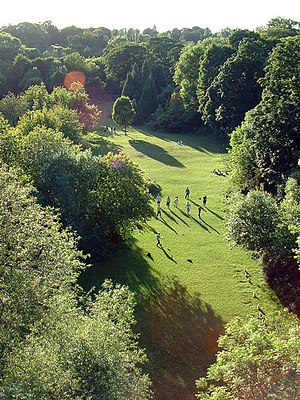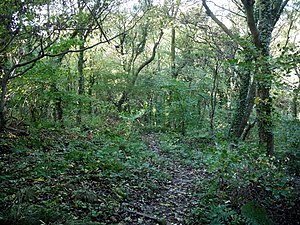Hawthorn Dene: Difference between revisions
Created page with 'right|thumb|300px|Hawthorn Dene {{county|Durham}} '''Hawthorn Dene''' woodland in County Durham, at approximately…' |
|||
| Line 12: | Line 12: | ||
==References== | ==References== | ||
{{reflist}} | {{reflist}} | ||
*[http://www.natureonthemap.org.uk/map.aspx?map=sssi&feature=1000304,sssi,HYPERLINK,LABEL Map of site] | |||
[[Category:Woodlands of County Durham]] [[Category:National Trust properties in County Durham]] | |||
[[Category:Woodlands | |||
Latest revision as of 11:45, 13 January 2016

Hawthorn Dene woodland in County Durham, at approximately NZ435458. The wood has been designated a "Site of Special Scientific Interest".
The woodland fills the incised valley of Hawthorn Burn and extends from just south of the village of Hawthorn eastward as far as the Durham Coast railway line: the area between the railway line and the sea forms part of the Durham Coast SSSI.
Much of Hawthorn Dene consists of semi-natural and relatively undisturbed woodland that has developed on magnesian limestone; within Durham, only Castle Eden Dene SSSI has a largest area under this type of vegetation. At the eastern end of the dene, the woodland gives way to magnesian limestone grassland, while at the western end there is an area of tall fen vegetation.

Much of the woodland is dominated by ash, Fraxinus excelsior, but in places wych elm, Ulmus glabra is dominant; such woodland is scarce in Durham. Another notable feature is the occurrence of yew, Taxus baccata, on the lower valley slopes, this being rare in Britain.[1]
References
- ↑ "Hawthorn Dene". English Nature. 1984. http://www.english-nature.org.uk/citation/citation_photo/1000304.pdf. Retrieved 21 July 2010.